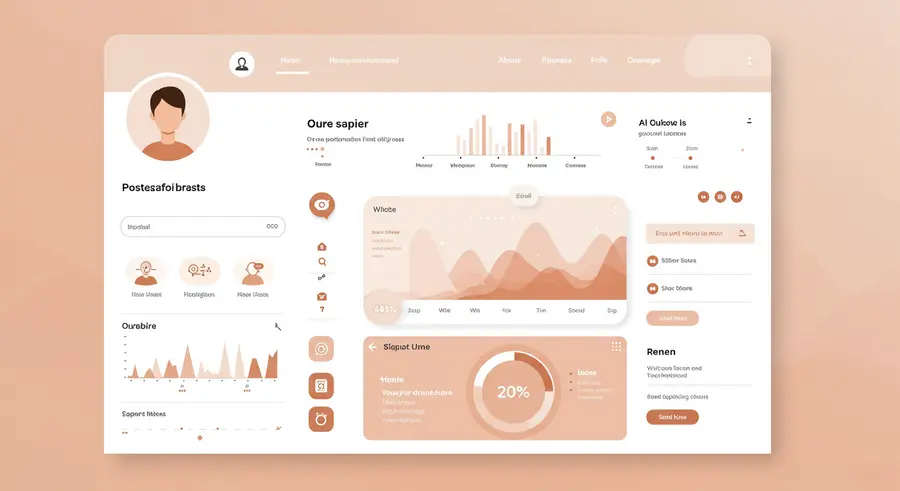Appearance

Hello, fellow innovators! 👋 Today, we're diving into an exciting frontier where Artificial Intelligence (AI) meets web development to create truly unique and engaging user experiences: AI-Powered Personalization. In an increasingly crowded digital landscape, standing out means understanding and adapting to individual user needs. This is where AI shines, transforming static websites into dynamic, responsive platforms that feel tailor-made for every visitor.
What is AI-Powered Personalization? 🤔
At its core, AI-powered personalization involves using machine learning algorithms to analyze user data—like browsing history, preferences, demographics, and real-time behavior—to deliver highly relevant content, recommendations, and interfaces. It's about moving beyond generic experiences to create a digital journey that resonates with each user on a personal level.
Think about it:
- E-commerce sites suggesting products you're genuinely interested in.
- News platforms curating articles based on your reading habits.
- Streaming services recommending movies and shows you'll love.
This isn't magic; it's the result of sophisticated AI models constantly learning and adapting.
Why is it Crucial for Modern Web Development? 🚀
In today's fast-paced digital world, user expectations are higher than ever. Generic experiences often lead to high bounce rates and low engagement. AI-powered personalization addresses these challenges by:
- Boosting User Engagement: When content is relevant, users spend more time on your site.
- Increasing Conversion Rates: Personalized recommendations often lead to higher sales and goal completions.
- Enhancing User Satisfaction: Users appreciate experiences that feel intuitive and anticipate their needs.
- Gaining Competitive Advantage: Offering a truly personalized experience can set your platform apart.
How Does it Work? The Technical Underpinnings ⚙️
AI-powered personalization typically involves several key components:
- Data Collection: Gathering vast amounts of user data (anonymously and with consent, of course!). This includes clickstreams, search queries, past purchases, time spent on pages, and more.
- Machine Learning Algorithms:
- Collaborative Filtering: Recommending items based on what similar users liked. (e.g., "Users who bought X also bought Y").
- Content-Based Filtering: Recommending items similar to what a user has previously shown interest in. (e.g., "You liked this type of article, here are more like it").
- Reinforcement Learning: AI learns from user interactions, continuously refining its recommendations to maximize engagement.
- Real-time Processing: Analyzing data and adapting the user experience on the fly, ensuring recommendations are always fresh and relevant.
- A/B Testing and Optimization: Continuously testing different personalization strategies and using AI to identify the most effective ones.
Real-World Examples in Web Development 💡
Let's look at some tangible applications:
- Dynamic Content Delivery: A website might display different hero images, headlines, or call-to-actions based on whether a user is new, a returning customer, or interested in a specific product category.
- Personalized Search Results: E-commerce sites often reorder search results based on a user's past purchases or browsing history, showing them what's most relevant first.
- Adaptive User Interfaces (UI): Imagine a web application that rearranges its dashboard layout to prioritize features a particular user uses most frequently.
- AI Chatbots and Virtual Assistants: These intelligent agents learn from user queries and provide personalized support, often predicting user needs before they even type a full question.
- Targeted Advertising: While often seen in ads, the same principles apply to internal promotions on a website, showing relevant offers to specific user segments.
The Road Ahead: Challenges and Ethical Considerations ⚠️
While the benefits are immense, implementing AI-powered personalization comes with challenges:
- Data Privacy: Ensuring user data is collected, stored, and used ethically and in compliance with regulations like GDPR and CCPA is paramount. Transparency and user control are key.
- Algorithmic Bias: AI models can unintentionally perpetuate biases present in the training data, leading to unfair or discriminatory outcomes. Careful model design and continuous monitoring are essential.
- Computational Overhead: Processing large datasets and running complex AI models in real-time can be resource-intensive.
- Over-Personalization: Sometimes, users might feel uncomfortable if the personalization is too intrusive or predictable, leading to a "filter bubble" effect where they are only exposed to familiar content.
For more on the ethical considerations of AI, especially how to make AI systems more transparent and understandable, check out our related article on Explainable AI (XAI). It's crucial to build trust and ensure fairness in AI-driven systems.
Conclusion: The Future is Personalized 🌐
AI-powered personalization is not just a trend; it's a fundamental shift in how we build and interact with the web. By leveraging the power of AI, developers can create truly dynamic, responsive, and user-centric experiences that not only meet but exceed user expectations. As AI technologies continue to evolve, the possibilities for creating deeply personalized and impactful web applications are limitless.
Embrace the future, and start personalizing! What are your thoughts on AI in web development? Share your insights below! 👇